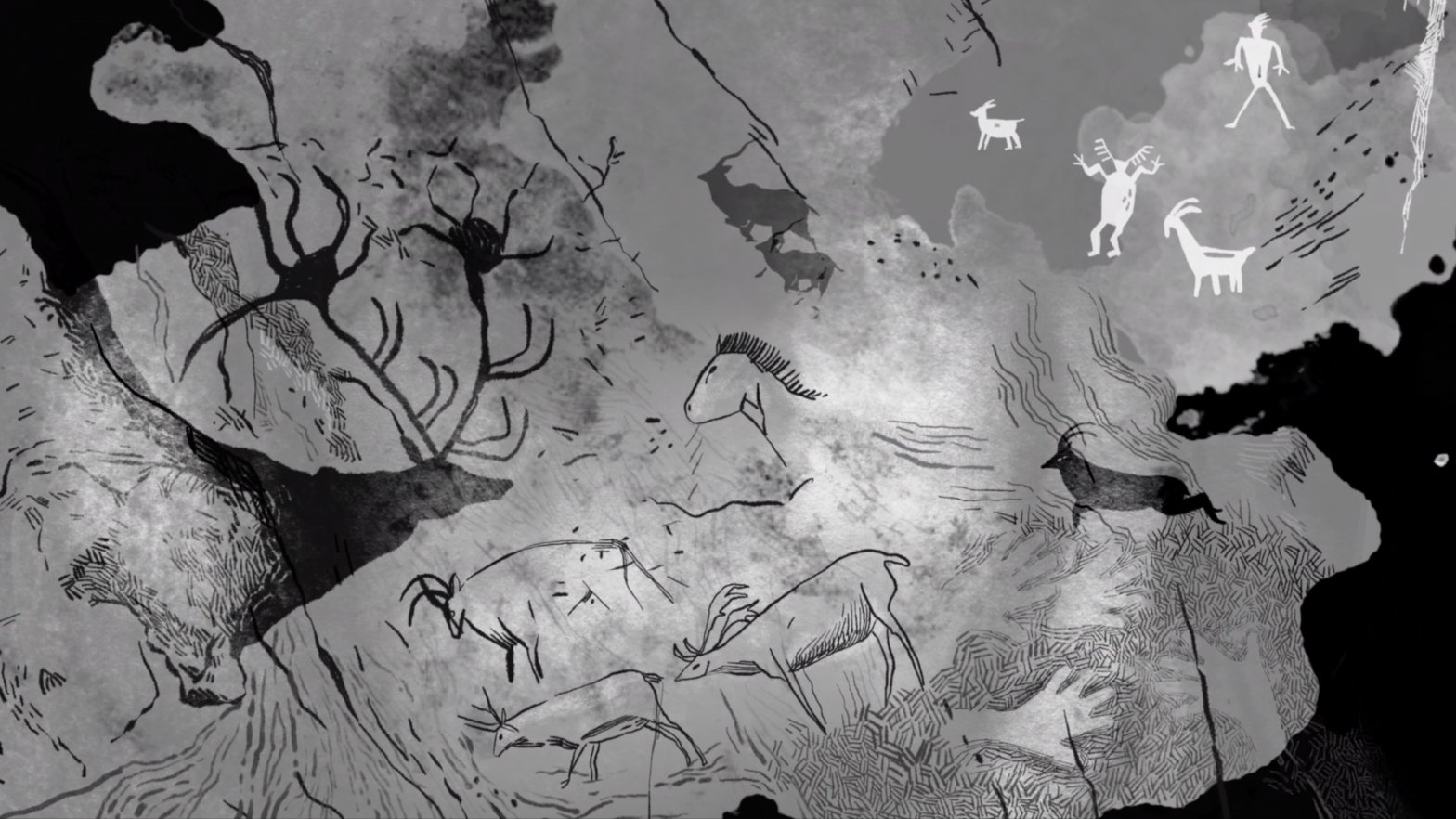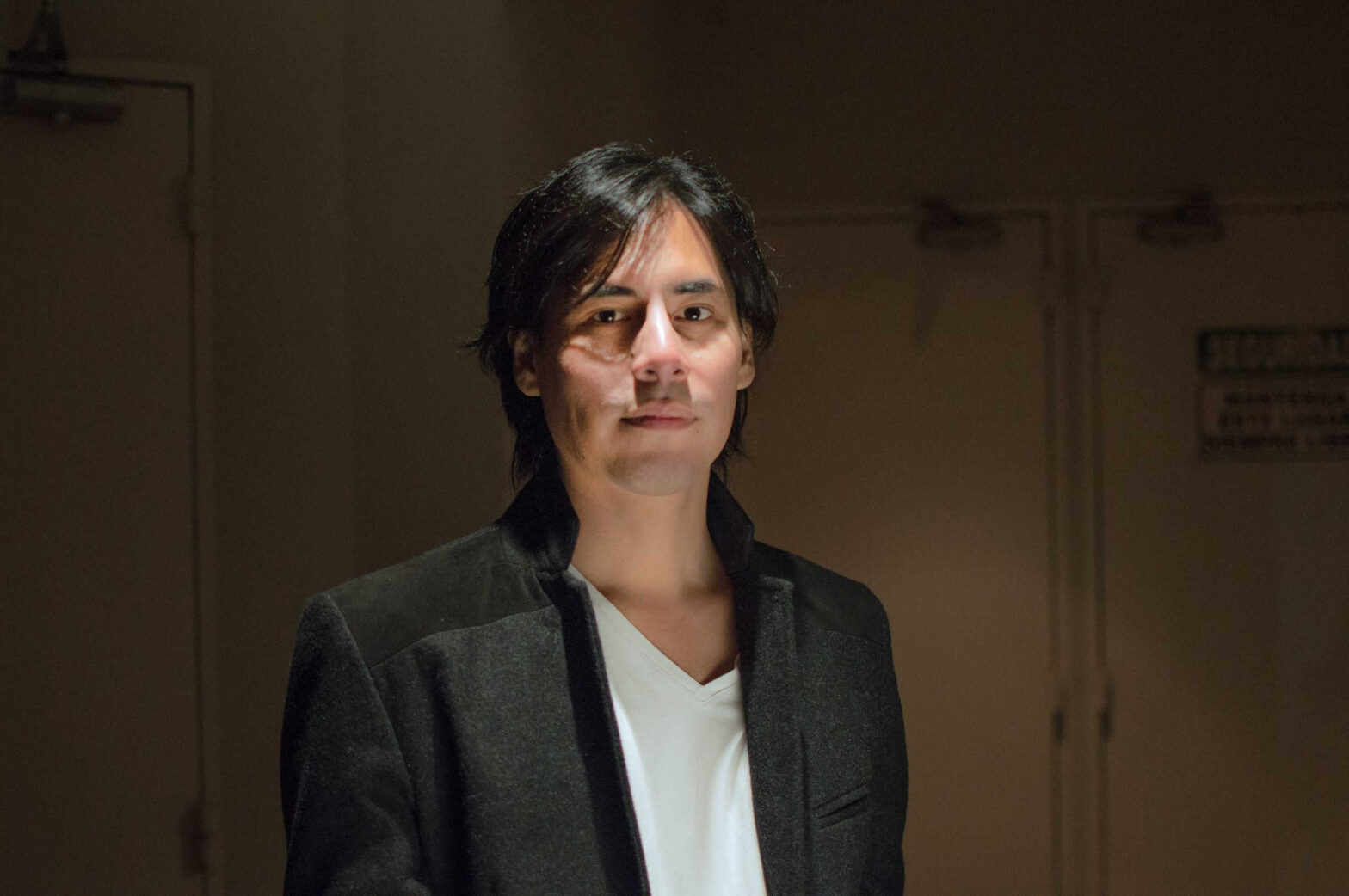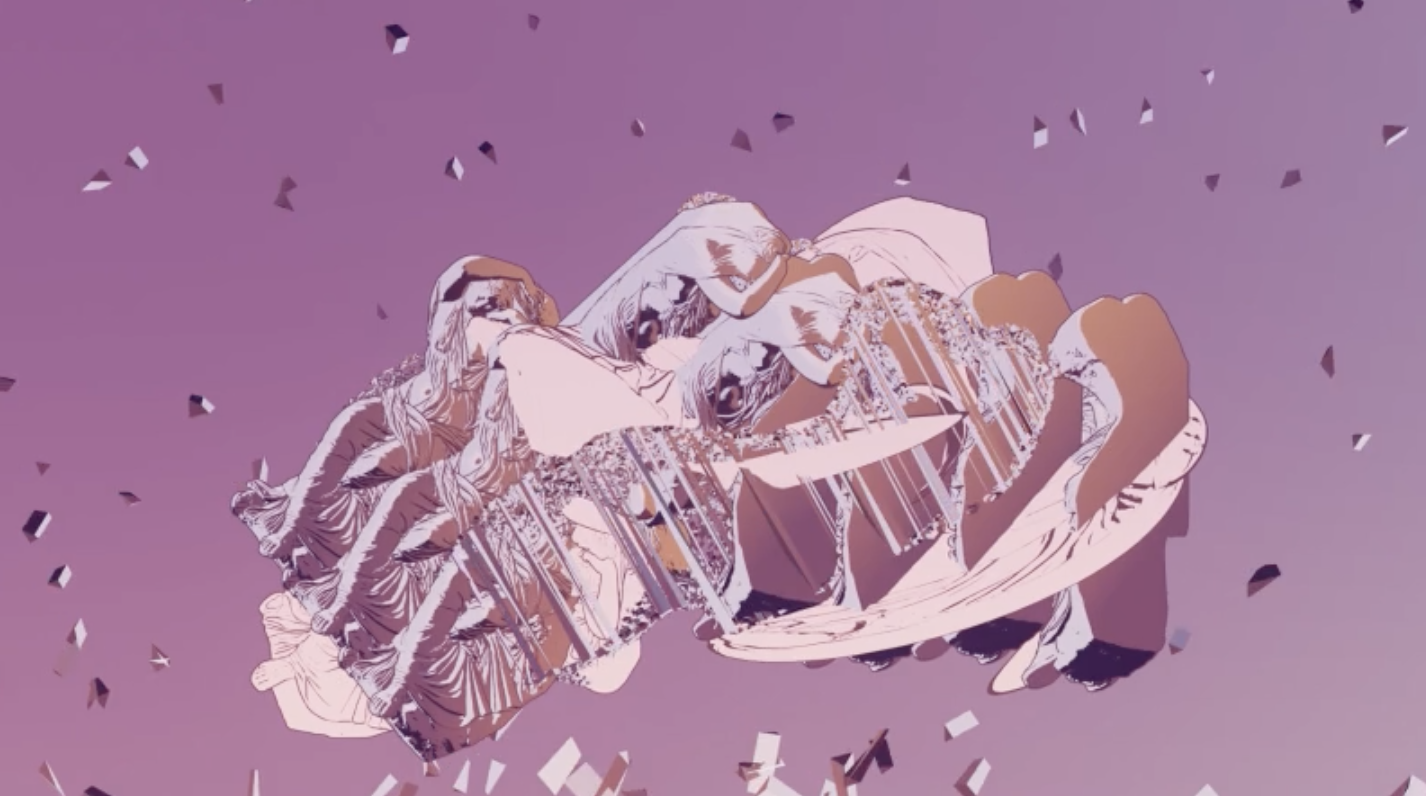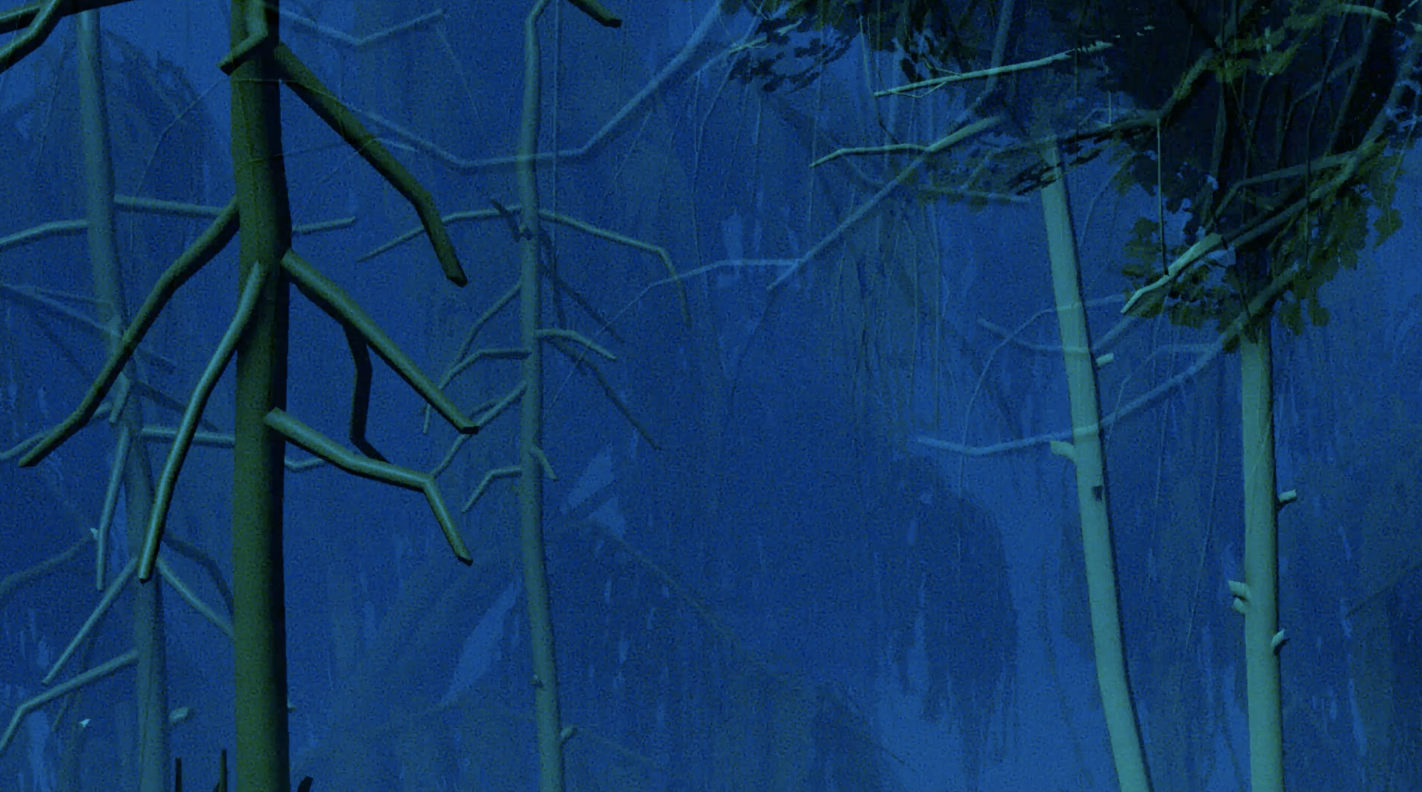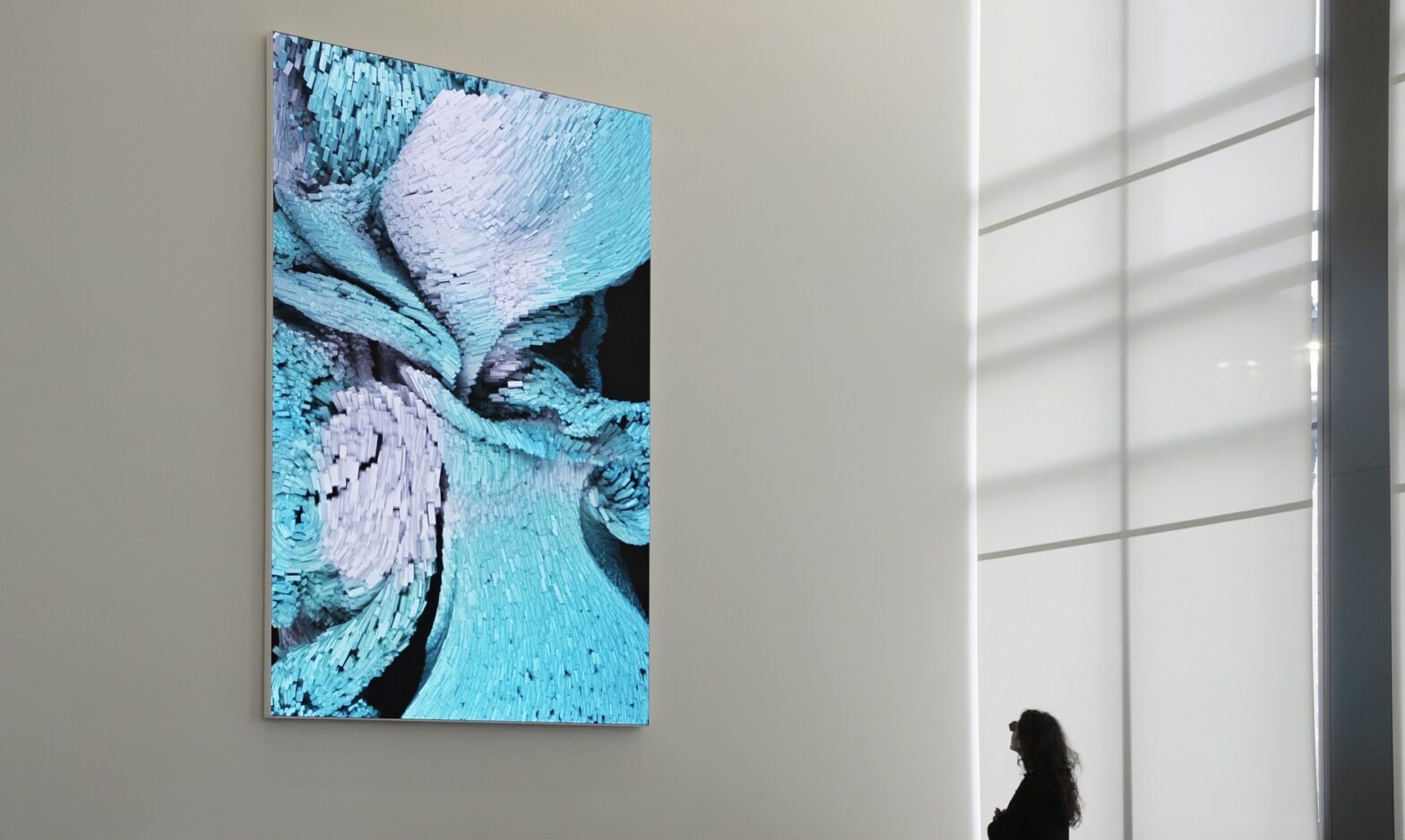Roxanne Vardi and Pau Waelder
This interview is part of a series of three editorial articles that dive deeper into the different software, technicalities, and processes that go into creating digital artworks, in order to offer our readers a deeper understanding of digital art as a medium.
We speak to Kineret Noam as part of a collaboration with Render Studio, a collective creative experimentation for a digital reality. Render Studio is inspired by art, design, nature and technology and aims to explore dimensions of virtuality, interactivity and motion. Kineret Noam’s series Three Rooms and The Whispering Reed are both featured on Niio this summer, and were both created for Render Studio.
Kineret Noam, The Whispering Reed, 2022
For the creation of this series you made use of two different digital art practices. Could you expand on the difference between these two practices and how you integrated each towards the creation of the final artworks?
In the creation of these series I used two techniques. First I paint on my Ipad using Procreate and Photoshop, which allow me to create digital illustrations that feel like they are painted with a brush. I create the sketch with Procreate to get an understanding of the composition. I choose the brushes that feel like the real thing, the process is really cool. Secondly, I build every layer with all the text and the colors. For example when I illustrate a tree, I make the whole tree in one layer, and then I open up a new layer and make the mountain. In one minute of the final video we have about fifteen layers. Once I’ve created the individual elements in Procreate I arrange all the layers in Photoshop. This can amount to about sixty layers. Then in the final composition I decide which elements are moving and which stay still. In this way, I can focus on time and on depth of the composition.
Once I have the different elements of a scene set in different layers in Photoshop, I think about the mise-en-scene and what I want to say using these elements.
The second technique is Frame-by-Frame animation. Once I have the different elements of a scene set in different layers in Photoshop, I think about the camera, the cinematic view, the mise-en-scène and what I want to say using these elements. The camera can take the vantage point of the spectators which is a more static and passive angle. For example, I am now working on a series about Genesis. What I am trying to convey with this series is the historical importance of the Genesis story, which we all know of and which my children will know of as well. So the camera, or the vantage point, in this series is always static. But, sometimes I want to say something about time and about feelings. There is a famous song in Hebrew by singer Rona Kenan titled “My Prison by the Sea” in which the artist says ‘every time I turn away I seem to miss a train’. So sometimes I want to portray the feeling that something happened emotionally but that it is moving on, like we all do in life. So in that way I decide what to do with the camera, what needs to move and what needs to stay static in order to convey the meanings and feelings I am looking for.
Kineret Noam, The Whispering Reed: Cleansing, 2022
So if the different elements are animated individually, we can say that you act as a stage director, setting up the stage and placing the actors. Right?
Exactly, yes. I think about the stage, in which the elements intervene like a cast. Sometimes I want to tell the story not from the point of view of a distanced viewer, but getting in the middle of the action. For instance, in The Whispering Reed, King Midas was alone, so I imagined following him with the camera and I tried to capture his emotions in that situation, to understand him and his loneliness in this tragic story. So, I thought about myself as a child walking around a valley near my childhood home, which also gave me the inspiration for the background and nature in this series.
I always ask myself: What is the mission of the artist today, now that we have digital tools?
As part of your work process you have stated that you first approach your works with more traditional art practices such as drawing, and then proceed to applying different softwares to create the final digital versions. What is the role of the digital in your artistic practice?
First, I will answer on a technical level. When I draw in my studio with a pencil I need to fix the work, so it takes a lot of time to work on every detail of each element and to create the composition. If I want to change something about the character I need to change the composition. When I do this digitally it’s much easier to fix things. Secondly, from a philosophical viewpoint, the great traditional artists had to draw from their memory, from just one image. But our memory works differently, we need a few frames if we want to build something. For example when you think of a childhood event, you don’t imagine it in one frame but in several frames. I always try to think how we can keep an image dramatic, like the great artists did, but still succeed in spreading the memory in a broad way. Today, it’s more convenient to create several frames, but it’s also the conflict between traditional art and digital art. I always ask myself, “what is the mission of the artist today, now that we have digital tools?”. When the camera was invented, artists encountered a conflict, because if they could capture something with a camera why would they need to draw or paint it? We need to ask ourselves: What is our mission today?
Kineret Noam, Three Rooms, 2022
How do today’s different available softwares help in reconstructing ancient narratives and philosophies while bringing attention to and questioning the world we live in today?
When you read a story, for example, ancient Greek mythology, you can imagine a few timelines together: the refuge, the character, which register in your head like a collage. When you create this and put it on a timeline, you block or omit things from your mind. So I try to ask myself how I can keep these hidden instances within the timeline, taking into consideration that we cannot see everything. Areas where you look again and again and suddenly you see something. I leave some illustrations not very clear on purpose.
Do you also feel that it helps you to add a personal layer to such a well-known narrative? Taking into account that the inspiration for scenery comes from the valley next to your childhood home.
What is great about my work is that I can choose subjects that I am connected to, so in all of my series I choose subjects that I feel that I can give more layers to from my personal perspective. For example, there is a scene in The Whispering Reed where the character is drying his laundry. There is a special prayer in one of the Jewish holidays where it says that God will take our sins and clean them like white laundry. Comparing the atonement to washing, I might have done that unconsciously as I thought of this prayer which I was used to repeating as a child.
Kineret Noam, Three Rooms, 2022
You have also created NFTs as part of your collection of the Three Rooms series. Could you please elaborate on your experience in this new Art Space and expand on your expectations for this new medium?
I am a bit suspicious and afraid of this space: we live in this Instagram society, we just have a few seconds to view an NFT square and cannot dive deeper into it. Thinking about NFTs as one more layer in the history of art, I find this layer hard for me to understand. When comparing NFTs to the introduction of the camera I feel that I need to find a way to do things like Cardi B is doing. The pop star is able to take the medium she is working with, pop music which is vastly spread through out society and highly accessible to all, with all the industry around it and the expectations of her fans, and turns it around to take a very personal and extreme position that is unique to her in a way critiquing society and destabilizing social foundations.
I want to take the NFT square and say something extreme about our digital world, and about our way of looking and understanding art
I am still not sure how to do this, but when I create a square NFT I want to do it in an extreme way. Using the negative aspects of society and ridicules because in a sense we are consuming this. I want to take the NFT square and say something extreme about our digital world, and about our way of looking and understanding art. I want to question, and to create something that addresses the way we use NFTs and the way we use our phones and social media.

